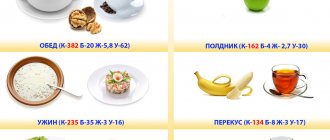Olives are very tasty fruits that can provide the human body with vitamins and minerals. Their healing properties should be taken into account:
- Prevents bone loss.
- Prevent various types of cancer.
- Reduce inflammation and symptoms of arthritis.
- Improves digestion.
- Calms allergic reactions.
- Protects against cardiovascular diseases.
- Increase cognitive function.
- Lower blood pressure.
Olives are perhaps the most famous fruit in the Eastern Mediterranean regions. They have been used in cooking and medicinal preparations for over a thousand years. The oil obtained from the fruit has gained great popularity in modern cooking. It has a concentrated form of nutrients, but it's important not to overlook the health benefits of the olive itself. The calorie content of these berries is quite low compared to other drupes. There are many different types of olives, and some may have more or less nutrients, but they all have certain elements that make them essential in a healthy diet. They are widely used in cooking, added to salads, sandwiches, or eaten as a snack. Olive oil is used in many recipes and is a source of essential amino acids.
Olives are a good source of vitamin E (tocopherol) and other powerful antioxidants. Research shows they are good for the heart and may protect against osteoporosis and cancer.
An easy way to add variety to your diet is to add delicious and nutritious olives to your diet. Calorie content 1 pc. canned fruit approximately 6 units (kcal). They can be eaten by those who care about their figure.
The calorie content of olives and olives is slightly different, despite the fact that they are the fruits of the same tree.
Olives are oval in shape with an average weight of about 3–5 grams. Some unripe fruits are green and turn black when ripe. In our region they are usually called olives. Others remain green even when fully ripe.
It is worth noting that black olives, whose calorie content is 145 kcal per 100 grams, are the most suitable for creating Provençal oil.
In Mediterranean countries, 90% of olive fruits are used to produce olive oil.
The nutritional value
Olives are a source of amino acids, vitamins and minerals. The calorie content of 100 grams of fruit is 115 units. They consist of 75–80% water, 11–15% fat, 4–6% carbohydrates and small amounts of protein.
74% of the fat content in olives is oleic acid, which is a group of monounsaturated fatty acids. This is the main component of Provençal oil, which is very beneficial for health. It helps reduce inflammation in the body and reduces the risk of cardiovascular diseases.
Below is a detailed breakdown of the nutrients in olives.
Nutritional value of olives
| Olives (calorie content per 100 grams) | 115 kcal |
| Water | 75.3 g |
| Squirrels | 1 g |
| Fats | 15.3 g |
| Carbohydrates | 0.8 g |
| Cellulose | 3.3 g |
| Ash | 4.3 g |
| Beta carotene | 0.231 mcg |
| Thiamine | 0.021 mg |
| Riboflavin | 0.007 mg |
| Niacin | 0.237 mg |
| Pantothenic acid | 0.023 mg |
| Pyridoxine | 0.031 mg |
| Folic acid | 3 mcg |
| Vitamin E | 3.81 mg |
| Phylloquinone | 1.4 mcg |
| Kholin | 14.2 mg |
| Potassium | 42 mg |
| Calcium | 52 mg |
| Magnesium | 11 mg |
| Sodium | 1556 mg |
| Phosphorus | 4 mg |
| Iron | 0.49 mg |
| Copper | 120 mcg |
| Selenium | 0.9 mcg |
| Zinc | 40 mcg |
Vitamins and minerals
Olives are a good source of vitamins and minerals, some of which will be added during processing.
- Vitamin E is a strong antioxidant. Plant foods high in fat contain a fairly high concentration of it.
- Iron. Black olives are a good source. It is indispensable for transporting oxygen to the body's cells.
- Copper is an important mineral that is often deficient in typical Western diets. Its deficiency may increase the risk of heart disease.
- Calcium is the most abundant mineral in the body. It is indispensable in the composition of bones and muscles.
Dishes
Thanks to their piquant taste and unusually healthy composition, olives are perfect for preparing a wide variety of dishes: sauces, soups such as solyanka, fish, meat dishes and desserts. Salads with pickled or salted olives are especially popular. These drupes go well with cheeses, tomatoes, beans, sweet peppers, onions and garlic; the most popular dish today, pizza, cannot do without olives. The calorie content of dishes that include olives depends on their other components.
For example, the French national dish is tapenade, a sandwich paste made from olives, anchovies, capers, garlic, olive oil and lemon juice. Tapenade, whose calorie content is 190 kcal/100 g, is eaten with a fresh baguette or crispbread, so this dish cannot be called dietary. But the energy value of 100 g of Greek salad - a popular dish in many countries - is less than the calorie content of the olives themselves, it is only 45 kcal.
Other plant substances
Olives are rich in many minerals and high in antioxidants.
- Oleuropein is the most common antioxidant. It is found in the pulp of fresh or unripe olives.
- Hydroxytyrosol is a powerful antioxidant. During fruit ripening, oleuropein breaks down into hydroxytyrosol.
- Tyrosol is the element that is most abundant in oil of Provence. This antioxidant is not as powerful as hydroxytyrosol, but may help prevent some heart diseases.
- Oleic acid is an antioxidant that helps prevent liver damage and reduces the risk of inflammation in the body.
- Quercetin is a nutrient that may lower blood pressure and improve metabolism. Like tyrosol, it may help prevent heart disease.
Olive processing
The most common varieties of olives are:
- Spanish.
- Greek.
- Californian.
Because olives are very bitter, they are usually not eaten raw. To lose bitterness, they are pickled. The calorie content of canned olives is 115 kcal per 100 grams. However, there are some varieties that do not require processing and can be consumed when fully ripe. Processing olives can take anywhere from a few days to several months, depending on the methods used, which often rely on local traditions that influence the taste, color and texture of the finished product. The fruits are preserved with or without seeds. The calorie content of pitted olives is no different from canned olives with pits.
Lactic acid is of no small importance in the fermentation process. It acts as a natural preservative that protects olives from harmful bacteria.
Researchers are currently studying fermented olive fruits that have probiotic effects. Eating them can lead to improved digestive health.
Contraindications
If you have allergies, as well as individual intolerance, you should stop using drupes.
The products are used with caution during retinol therapy due to the risk of developing hypervitaminosis.
Is it possible to eat with pancreatitis? People suffering from pancreatitis or cholecystitis should not eat olives due to their ability to increase bile production.
How many olives can you eat per day without it being an abuse and causing harm? 5-10 pieces or 1 tbsp. there will be enough oil.
Benefit for health
Olives are a staple in the Mediterranean diet. They provide many health benefits, especially for the heart. The dietary antioxidants that olives contain may reduce the risk of chronic diseases as well as some inflammatory processes in the body.
Scientists have proven that eating fleshy olive fruits significantly increases the content of glutathione in the blood, and this is one of the most powerful antioxidants in the human body.
They can also help fight bacteria that are responsible for infections in the respiratory tract and stomach.
Summarize
- Olives are a fabulous snack that boasts healthy fats and polyphenols. Their low calorie density means they can help you lose weight by helping you feel full.
- However, you need to control portion sizes because the calories in olives can add up quickly.
- This popular Mediterranean fruit is an excellent replacement for any processed foods or high-calorie snacks in your diet.
The article was prepared by experts for informational purposes only. It should not be used as a guide for treating medical conditions and is not a substitute for professional medical advice, diagnosis, or treatment. In case of illness or any symptoms, you should always consult a doctor and not self-medicate.
Tags: How to lose weight, Olives
About the author: Maria Bartseva
General practitioner, expert in nutrition and weight management. Graduated from the International State Ecological University named after. A.D. Sakharova, Faculty of Environmental Medicine.
- Related Posts
- Do pumpkin seeds help you lose weight?
- 9 Best Ways to Remove Fat from Arms and Armpits
- Does aloe vera help you lose weight? Efficacy and side effects
« Previous entry
Circulation
Olives are rich in iron and copper. These are the two main components needed to create red blood cells. Without these minerals, their amounts will decrease, which can lead to anemia. This disease can cause fatigue, indigestion, headaches, and an overall decrease in organ health and function. In addition, some studies have shown that olives and oil of Provence can lower blood pressure.
Is there any harm from using it?
The benefits are clear, but can olives cause harm to the body? The daily norm is no more than 100 g of green and black olives with pits and 50 g of black ones without pits.
If you consume only olive oil, the body will be harmed, since omega-6 unsaturated fatty acids will not be supplied enough, and omega-3 will not be supplied at all. Therefore, the usefulness of olives and olive oil will increase if you supplement them with nuts and seafood, as well as fatty sea fish. Can you fry in olive oil?
Bones
People who eat olives are less likely to experience bone loss and osteoporosis. The latter is characterized by a decrease in bone mass and bone quality, which can increase the risk of fractures. Olives contain hydroxytyrosol, as well as oleuropein, which is associated with calcium production in the body. Adding olive fruits to your diet will protect you from a hereditary predisposition to bone disease.
The risk of osteoporosis in Mediterranean countries is significantly lower than in other European countries, which has led scientists to suggest that olives offer protection against this disease.
Cancer Prevention
The mystery of a panacea for cancer remains a serious problem in the modern world to this day. It is worth noting that there are many alternative therapies that slow down or even prevent the disease. Scientists have proven that olives are rich in beneficial substances that can help fight cancer.
First, olive fruit contains anthocyanins, antioxidants and anti-inflammatory substances that may help prevent disease. Antioxidants protect the body from free radicals, which turn healthy cells into cancer cells. So consuming them is the best way to protect yourself from cancer.
Secondly, olives contain oleic acid, which inhibits certain growth receptors that promote the development of breast cancer. It is also worth noting that olives are rich in hydroxytyrosol, which prevents DNA mutations and abnormal cell development.
Olives and oil of Provence tend to be consumed in large quantities among Mediterranean regions, where cancer incidence is lower than in other European countries. It is possible that eating olives may help reduce the risk of developing this disease. This may be partly due to their high oleic acid content. Experiments have shown that olive oil disrupts the life cycle of breast, colon and stomach cancer cells.
What is the difference with olives?
Both olives and black olives grow on the same tree, and only in Russia are they distinguished. When asked what color the olives are, they will confidently say that they are green. Of course, because black ones are called olives, and green ones are called olives.
In the rest of the world, both are called olives.
They say that GOSTs are to blame for this. When the first batches of canned olives arrived in Russia, someone wrote down green fruits as olives, and black fruits as olives. This seems to be where the division began.
Branch with ripe olives











